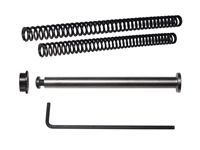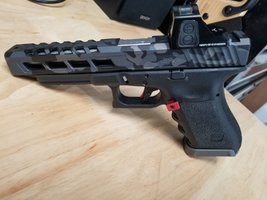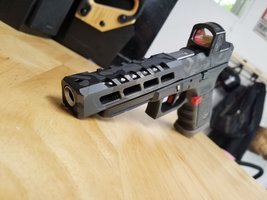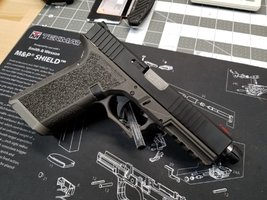My gunsmith was advising on reducing my Gen4 G17/34 recoil springs to 11lbs for competition, and he said to also use 147gr ammunition along with the lower powered spring. That has to do with making the minimums for USPSA, which I planning to start shooting in the near future. I'd just be using 124gr ball ammo for competition for now, so if 13-15lbs would make more sense let me know.
Other question I have is this: would it be wise to reduce down the recoil spring strength on my SHTF/end of the world kit Glock 17's? It is smarter to keep the factory 17lbs spring in there? Will something like a 13-15lbs cause issues with cycling and reliability, especially using more commonly available loads like varying JHP/FMJ 115gr/124gr factory ammo loads? Figure that's what I own/shoot and that's what is most prevalent out there.
Other question I have is this: would it be wise to reduce down the recoil spring strength on my SHTF/end of the world kit Glock 17's? It is smarter to keep the factory 17lbs spring in there? Will something like a 13-15lbs cause issues with cycling and reliability, especially using more commonly available loads like varying JHP/FMJ 115gr/124gr factory ammo loads? Figure that's what I own/shoot and that's what is most prevalent out there.
Last edited:

![Laugh [laugh] [laugh]](/xen/styles/default/xenforo/smilies.vb/012.gif)



